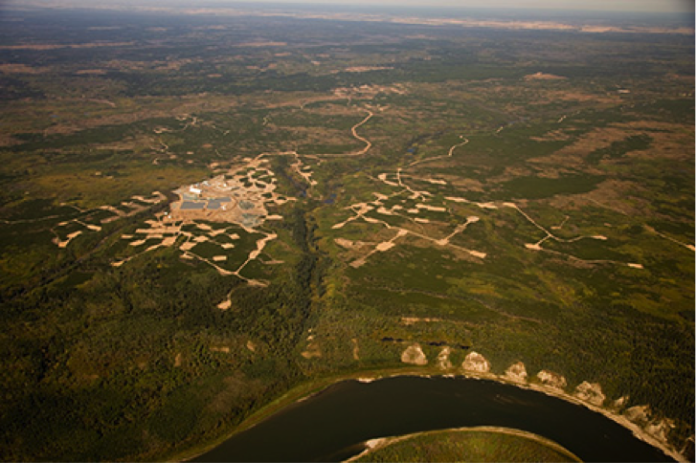Province passed environmental assessment Thursday to move project forward
The Star-Orion South Diamond Mine Project in the Fort à la Corne Forest is one step closer to becoming a reality after one of the longest environmental assessments in the province’s history.
The company called it a “major milestone towards a diamond mine in Saskatchewan,” however leaders from nearby James Smith Cree Nation have vowed to continue opposing the project. They say it negatively affects the community’s treaty rights and culture.
“The way things stand, everyone else will get the benefits of a mine while we are left with all the consequences,” James Smith Chief Wally Burns said in a written statement. “There will be no mine until our peoples’ interests are satisfied.”
Environment Minister Dustin Duncan gave official approval to the project’s environmental assessment on Thursday. In his decision, Duncan wrote that any harmful effects could be “eliminated or minimized,” if Star-Orion stuck to their proposal.
The company plans to use work camps and staggered shift changes to offset the increase in heavy traffic. They also included a decommissioning and reclamation plan, which includes removing facility infrastructure, capping and revegetating tailings piles and partially back-filling the Star pit once the mine is decommissioned. The company is also considering filling the pits with water from the South Saskatchewan River, however that plan is subject to further review.
In an interview Thursday afternoon, Duncan said the government was confident the decision was the right one.
“Diamonds are not something that in the past we’ve seen as a commercial resource development of this size,” Duncan explained during an interview on Thursday. “I think all of that factored into leading to what would certainly be considered the longest environmental assessment process that we’ve gone through.”
However, that decision didn’t sit well with leaders from James Smith Cree Nation. The community sits adjacent to the proposed development site, which is located roughly 65 km east of Prince Albert.
In a statement sent to the media late Thursday night, James Smith leadership accused the provincial government of failing to meaningfully address environmental concerns, while also violating traditional hunting rights by limiting access to areas where hardly anyone hunts, fishes or traps. The provincial government has set aside conservation areas adjacent to the mine for traditional uses, a decision made following consultation with local Indigenous leaders.
“The mine itself will require the permanent destruction of an irreplaceable sacred site, continuing the Indian Act and residential school legacy (of) crushing our spirituality so others can benefit,” Burns said. “Investors should beware. While this appears (to be) a major breakthrough for the mine, there will be no project until our interests have been satisfied. Shoving this mine down our throat will not work.”
Some leaders took issue with the environmental impact statement, which they said incorrectly states how much of the Fort à la Corne Forest will be affected. Other leaders, like Peter Chapman First Nation Robert Head, said the more they looked into the environmental assessment, the less and less willing the were to support the project.
The provincial government had a working group that directly consulted with James Smith Cree Nation during the process. Duncan said he remains satisfied that they followed through on all their obligations to consult local First Nations on the project.
“It’s not going to satisfy everybody,” Duncan said. “We certainly understand that. Certainly from the proponent’s side, they would have like this process to have moved quicker, and certainly from some communities, they likely feel like the accommodations don’t go far enough, or that there wasn’t enough consultation.”
Duncan added that the process would be modified somewhat should Star-Orion or any other company wish to open another diamond mine the process. He said it’s only natural to apply lessons learned from this process to the next one.
Star Diamond CEO Kenneth E. MacNeill welcomed the provincial government’s decision to move the project to its next stage. They’ll now have to secure a series of leases, licenses and permits, including approval to construct and operate a hazardous substance and waste dangerous goods storage facility. They’ll also need a groundwater protection permit and aquatic habitat protection permit from the Water Security Agency, and provincial highway access permits from the Ministry of Highways and Infrastructure, among other provincial approvals.
According to the environmental assessment, it will cost roughly $1.41 billion in production capital costs to develop the mine, which will employ roughly 730 people during full operation.
The project has already received federal approval from the Canadian Environment Assessment Agency.
“This approval, alongside the previous positive Federal decision, marks a major milestone towards the development of a diamond mine in Saskatchewan,” MacNeill said in a media release. “We have previously demonstrated that the proposed Star-Orion South Diamond Project can be successfully constructed and operated and are very pleased that the project has now received positive federal and provincial environmental decisions.”


